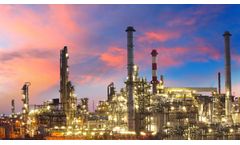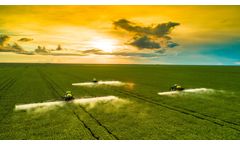Emissions Monitoring Articles & Analysis
15 articles found
Farmers will be asked to add cover crops to their vegetable rotation. We will monitor greenhouse gas emissions, soil health benefits, economic impacts, and social barriers to the adoption of using cover crops versus not using cover crops on their fields. ...
Detection Technologies of Soil Fertilizer The detection of soil fertilizer is mainly to detect the chemical elements contained in it, and the most content is nitrogen, phosphorus and potassium. Determination of nitrogen content Nitrate is reduced by nitrogen alloy in alkaline medium and then distilled out ammonia; or nitrate is reduced into ammonium salt in acid medium, and concentrated sulfuric ...
Under this policy, the government has established the Central Pollution Control Board (CPCB) and State Pollution Control Boards (SPCBs) to monitor air quality and enforce the standards. In addition,the government has also implemented the Continuous Emissions Monitoring System (CEMS), which requires all major industries, including the fertilizer ...
High-quality, accurate data collection for greenhouse gas emissions necessitates the use of gas sensors at several sites around the farm e.g. in milking pens for monitoring livestock, near storage areas for grain, in greenhouses, etc. Ideally, such sensors should be capable of automated, online data collection and logging to avoid the need for labour-intensive, ...
It had been compulsory in Finland to include a shelter in any building over a certain size since the late 1950s and Finntemet recognized the importance of being able to monitor air quality on these structures. At that time there was no device on the market capable on conducting the type of analysis required so the initial focus was on improving the FTIR technology. However, ...
Agriculture in the UK is responsible for 9% of total greenhouse gas emissions, with that number rising to 30% of worldwide total emissions.1 There are a variety of sources for such gases in agriculture, including methane production from livestock, carbon dioxide release on soil disturbance, and emissions from farm machinery.2-4 The question is how to reduce such emissions. Under the 2008 Climate ...
However, not enough is known about the impact of reduced cultivations on soil emissions. Cultivation often increases levels of CO2 emissions from soil, as soil disturbance allows microorganisms to oxidise more of the soil organic matter. ...
– High standards and focus on environment and safety is essential for a stable and safe operation. Included here is monitoring emission in our chimneys. Solutions from NEO Monitors gives us quick and accurate analysis on the level of nitrogen dioxide (NO2) and nitrous oxide (N2O), says Aas. Eliminated sources of error Critical parameters ...
But they should do more than just measure carbon emissions. He explained how Kenya is building a comprehensive system for estimating land carbon emissions using a wide variety of information, including data on soil, crops, land cover and usage, and daily weather reports. ...
A growing population and rapid development will put a strain on land used to grow food over the next century. But if reforestation is used to avoid climate change it will create further strain, says a new MIT study. Written by Vicki Ekstrom.You can read the original new in MIT NewsIt’s no surprise that the United States and China are the world’s top greenhouse-gas emitters. What may be ...
Received for publication April 8, 2009. Urea placement in band or nests has been shown to enhance N use efficiency, but limited work has been done to assess its affect on N2O emissions. This study compared N2O emissions from urea prills applied to an Amsterdam silt loam (fine-silty, mixed, superactive, frigid Typic Haplustolls) using broadcast, band, and nest placements. Experiments were ...
The intensification of grassland systems is leading to serious environmental risks due to the large input of nitrogen (N) in fertilizers and the subsequent gaseous losses. Addition of nitrification inhibitors (NI) or urease activity inhibitors to fertilizers could reduce these losses to the atmosphere. In the present study, the effects of the nitrification inhibitor 3,4-dimethylpyrazole phosphate ...
This article discusses the difficulty of regulating greenhouse gas emissions in the face of uncertainty, particularly with respect to the level of reductions needed in the post-2012 era to avoid dangerous climate change. There are also a number of regulatory options available, including carbon taxes, emissions trading, regulations and standards, and fiscal measures. Yet emissions trading has ...
Nonpoint pollution from agriculture is an emerging issue in the environmental policy of the European Union. Dynamic optimisation techniques are important in nonpoint pollution, and neglect of dynamic aspects may seriously mislead the proper design of policy measures. This paper presents an empirical assessment of nitrogen pollution abatement in the Ebro basin of northeastern Spain. The aim is to ...
The guidelines represent state-of-the-art thinking on how to reduce pollution emissions from the production process. In many cases, the guidelines provide numerical targets for reducing pollution, as well as maximum emissions levels that are normally achievable through a combination of cleaner production and end-of-pipe treatment. ...













